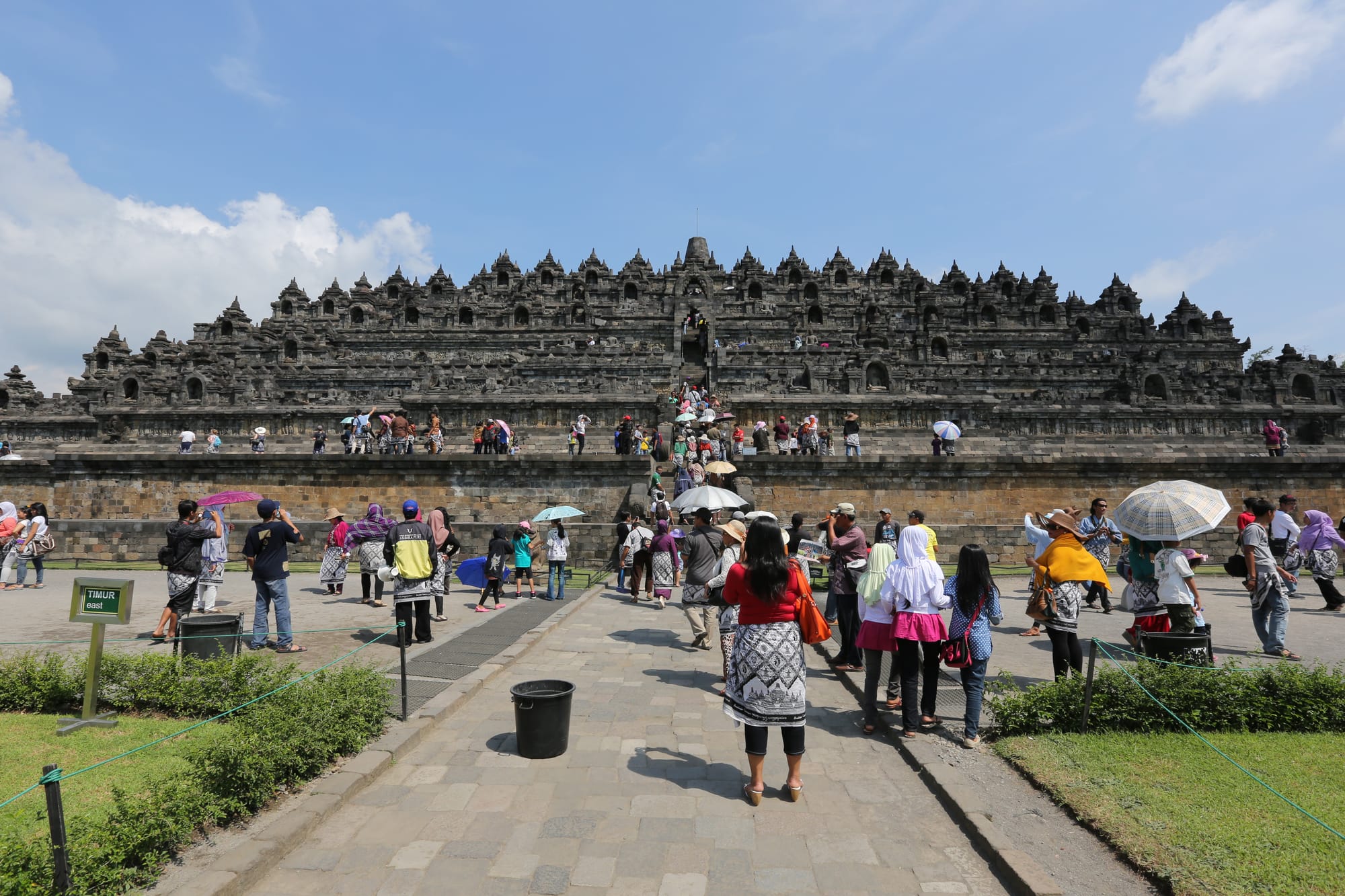The Magnificent Borobudur Temple

The Borobudur Temple, located in the Magelang Regency of Central Java, Indonesia, is one of the most remarkable Buddhist monuments worldwide. It showcases the brilliance of ancient Indonesian architects and artisans. The temple is situated in the Kedu Valley, the southern part of Central Java, and is surrounded by several volcanoes, including Mount Merapi, Mount Merbabu, Mount Sumbing, and Mount Sindoro. It is known as the largest Buddhist temple globally, as confirmed by the Guinness World Records. Built between AD 780 and 840, the temple is recognised for its cultural and historical significance and has been a UNESCO World Heritage Site since 1991.
The Borobudur Temple is one of the most visited tourist destinations in the country, attracting not only Buddhist pilgrims but also travellers interested in history, culture, and architecture. As a spiritual journey, Borobudur is designed as a three-dimensional mandala, symbolising the path to enlightenment in Buddhism. The pilgrimage journey around the temple takes visitors around the temple in a clockwise direction, ascending through the three levels of Buddhist cosmology: Kamadhatu (the world of desire), Rupadhatu (the world of forms), and Arupadhatu (the formless world, leading to Nirvana). This ascent symbolises spiritual progress toward enlightenment. The central stupa at the top represents Nirvana, the ultimate goal of spiritual awakening.
The Borobudur Museum (Karmawibhangga Museum), located near the temple, exhibits the history of Borobudur’s construction, archaeological discoveries, and the intricate relief panels that couldn’t be restored on the temple itself. Around the temple, there is Borobudur Park, which offers a resting area after exploring the temple with a relaxing environment and green landscape gardens. During certain night events, the temple is beautifully illuminated, creating a serene and mystical atmosphere. For a cultural experience, many local villages around Borobudur offer traditional Javanese experiences. Visitors can explore the rural lifestyle and engage with local craftspeople, such as making Indonesian batik or pottery. Cycling through the villages is another great way to have a more immersive experience, allowing visitors to enjoy lush rice fields, palm trees, and charming local communities.
Borobudur temple is an important pilgrimage site, especially during Vesak, an annual Buddhist festival commemorating the birth, enlightenment, and death of Buddha. There are 2 nearby temples, Mendut Temple and Pawon Temple, which are significant parts of the pilgrimage route. Intricate relief panels of Borobudur with approximately 2,670 relief panels contain art, depicting the life of Buddha, Buddhist teachings, and Jataka tales, a collection of Buddhist literature that illustrates the previous lives of the Buddha. These panels hold great religious, historical, and cultural records of life in ancient Java; for instance, the reliefs show images of trees, fruits, traditional costumes, and accessories that reflect the environment and Javanese culture around the temple.
The Borobudur Temple is precisely positioned to face north and align with the cardinal directions. Therefore, during the equinoxes, the sun rises and sets in perfect alignment with the monument. The researchers from the Bandung Institute of Technology, Indonesia's National Institute of Aeronautics and Space, and the Indonesian Agency for Meteorology, Climatology and Geophysics have revealed that Borobudur was designed as a sundial, with the main stupa serving as the gnomon and the surrounding smaller stupas on the third top terraces acting as the time markers.
This finding was one of the reasons the 9th IOAA (International Olympiad of Astronomy and Astrophysics) was held at the Borobudur compound. IOAA is an annual event for high-performing high school students from all around the world in the field of astronomy and astrophysics. Borobudur stands as a testament to Indonesia's rich cultural and religious heritage, blending spirituality, art, and architecture in an extraordinary way.